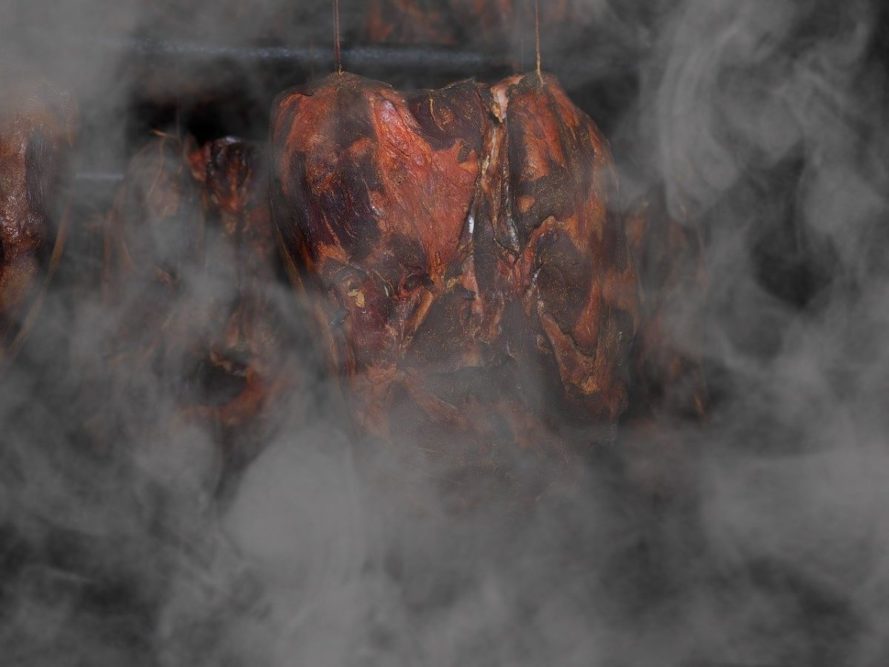One of the oldest methods of food preservation is smoking and drying. Today, the industry continues to experience strong consumer appetite for dried and smoked protein products. This may be fueled by consumers’ growing demand for natural and healthier-for-you food options.
“In the past, run-of-the-mill ovens and smokehouses that perform a lot of different cooking styles were mainstream,” said Patrick Henn, executive vice president at Kohler Industries, a Lincoln, Neb.-based company that manufactures Viers ovens and smokehouses. “Today, the trend we see is the client’s desire for tailored ovens and smokehouses.”
This means processors are now getting involved in the equipment design stage. The result is a custom-built unit to achieve their specific product recipes, business goals, and processes.
After all, the smokehouse or oven is the one piece of equipment within an organization that will make the company or lose the company the most money.
“With the push of a button, this system is responsible for yield loss, quality and consistency, energy consumption, environmental effects, food safety and regulatory demands,” said Tom Springman, owner of Kerres USA, Muncy, Pa. “This one piece of equipment needs to have the highest capacity and versatility possible for the ever-changing environment and economy we live in today.”
Having a smokehouse and batch oven that can deliver repeatable processes, track the process to satisfy HACCP requirements, offer the best process yields possible, and are quality built so they last for years are the key for every processor.
That’s why innovations in ovens and smokehouses are important to keep companies going strong.
In terms of design engineering, Marty Wimmer, product sales manager for batch thermal at Marlen, based in Riverside, Mo., noted more emphasis on process control and sanitary design is more prevalent today than ever.
“Tracking the who, what, when and where of each production load is critical for HACCP control,” he said. “However, there is much more to process control than simply tracking the process. Controlling the air flow so that it is repeatable load after load, day after day, week after week, is critical.”
Steve King, global vice president of sales for Alkar, Lodi, Wis., noted the trends he is seeing are geared in two distinct directions concerning improvement of sustainability — more efficient use of energy and taking steps to reduce the use of water.
“Stockholders and operations personnel recognize how important sustainability standards and improvements, and measurements are,” he said. “There is also significant focus on automation, be that loading and unloading, or controls focused. The challenge around labor is not going away; therefore, automation is a critical factor in all new designs.”
With this in mind, Alkar recently introduced the TurboChef, the only linear oven in the world that cooks with steam (wetbulb) convection heat (drybulb) and microwave energy.
“This oven was also designed with energy and water savings and can be operated with limited staff,” King said. “Alkar will also be introducing the Helix, which is a spiral oven with the same features, thus reducing the need for valuable real estate.”
Mario Ori, associate with Maurer-Atmos located in Germany, sees clean smoke as the future of smoking because it ensures the exact amount of smoke, an emission-free smoking process, less pollution caused by the smoking process, no tar, no ash, no fire, no danger of explosion and healthier food products.
“The smoking process becomes more controllable, safer and more economical thanks to this method,” he said. “The latest generation of controls and software are designed to enable much more precise adjustments of the systems. This guarantees even better uniformity and time savings.”
He noted it’s important to identify what current trends are desired and incorporate them into the company’s products.
Springman has seen many trends take root in ovens and smokehouses in recent years, with one of the most prevalent being the ability to control the break point within each trolley position, allowing the operator to load as much product within this trolley space as possible, all while having the complete consistency throughout the entire load regardless of the size of the system.
“Then there’s the versatility of complete temperature range and control within a system — the ability of a system to reach extremely low chamber temps and the ability to achieve extremely high chamber temps, for all types of products.”
Other trends include hygienic design and sanitary fitness, wet bulb and RH control continuing to be a top point.

